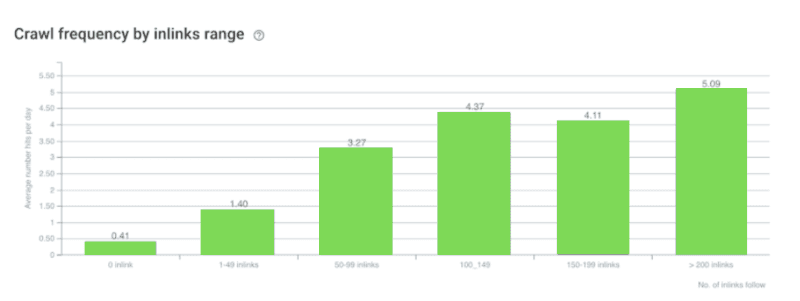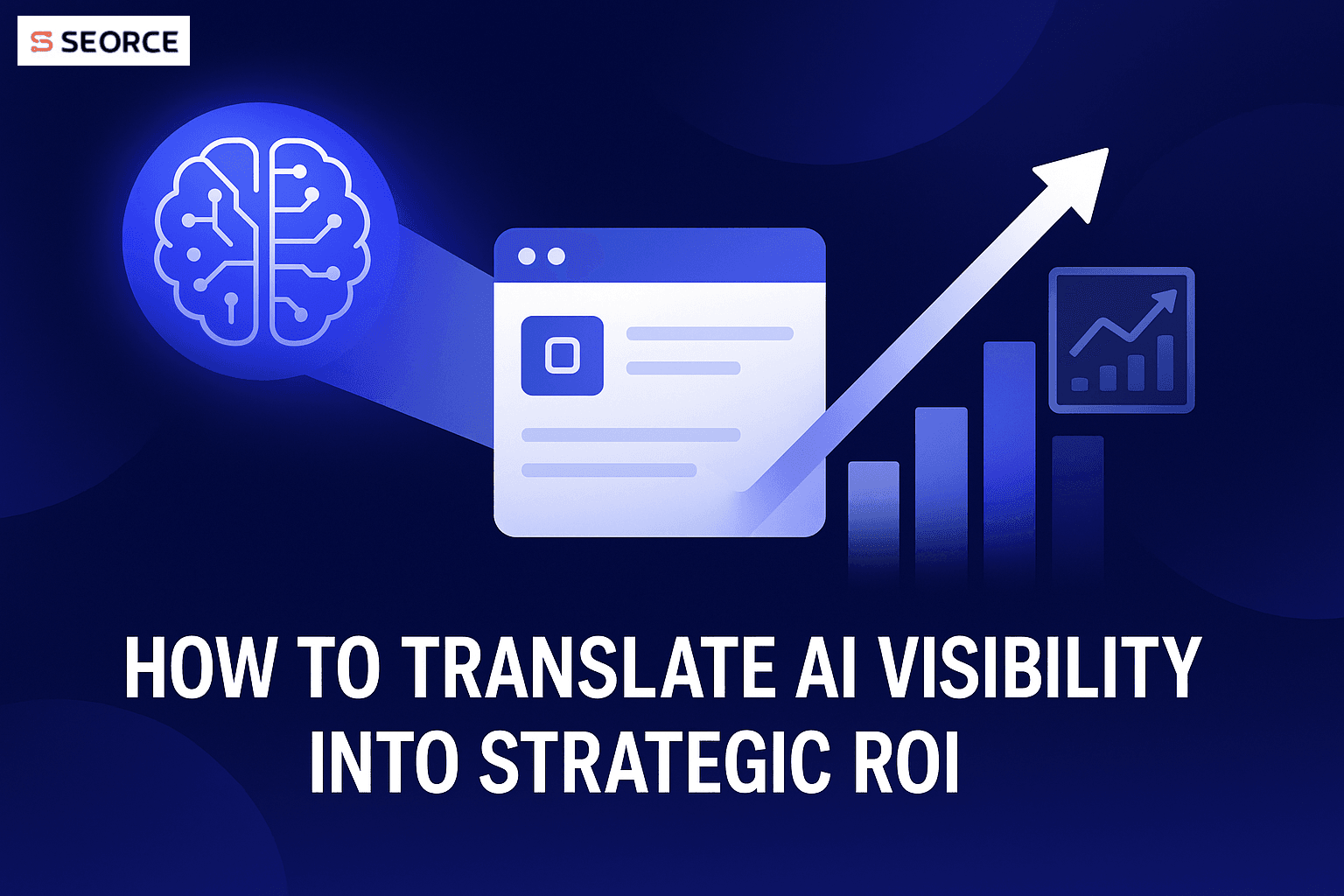What Are Internal Links?
Internal links connect one page on your website to another page within the same site. Unlike external links that lead to other websites, internal links stay within your domain. Here is what the internal link looks like on your webpage.
For example, your website’s navigation menu uses internal links to guide visitors (and search engines) to different pages on your site.
And, here's an example of how an internal link appears in the HTML code of a website:
<a href="https://www.example-site.com/">fixing crawlability issues</a>
In this code, the text "fixing crawlability issues" is the clickable link that directs users to the specified URL.
You can think of internal links as “backlinks” within your own site. Just like backlinks from other websites pass authority, internal links also share authority between your pages, helping both users and search engines explore your content more effectively.
Why Internal Links Are Important for SEO
Internal links are hyperlinks that connect one page of a website to another within the same domain. They are crucial for SEO for 5 key reasons:
- Improved Site Navigation
- Enhanced Crawlability and Indexing
- Distribution of Link Equity
- Establishing Information Hierarchy
- Reducing Bounce Rates
Let’s get into the details of each reason:
1. Improved Site Navigation
Internal linking improves your site’s user experience (UX) by helping visitors easily find related content.
For example, if a user reads an article about "how to build a PC," you can add links to relevant product pages with PC parts or to a related article like "how to fix a PC fan."
The goal is to keep users engaged on your site so they take actions like making a purchase, filling out a form, or buying a product.
By showing users useful and related content on the right pages, you can help them find what they need.
2. Enhanced Crawlability and Indexing
Websites have a "crawl budget," which is the number of pages Google will crawl and index in a certain time. For most websites, all pages fall within this budget.
However, for larger sites with 100+ pages, some pages might not get crawled or indexed.
Internal linking helps Google discover and prioritize important pages on your website. It guides Google to crawl and index deeper pages more efficiently, so more of your pages get indexed within the crawl budget.
So basically, the more internal links, the more pages crawled.
3. Distribution of Link Equity
Link equity, often referred to as "link juice," is the value or authority that a hyperlink passes from one page to another.
When a page links to another, it transfers some of its own authority, which can influence the linked page's search engine ranking and visibility. This transfer of value depends on several factors, including the authority of the linking page, the relevance of the content, and the number of links on the page.
For instance, a link from a high-authority page to a relevant page can significantly boost the linked page's SEO performance.
4. Establishing Information Hierarchy
Establishing an information hierarchy involves organizing content so that the most important information is presented first, followed by supporting details. This structured approach guides users through the content, making it easier for them to understand and navigate.
In the context of internal linking, this means strategically placing links to key pages in prominent positions, such as within main navigation menus or at the beginning of content, to highlight their importance.
By doing so, you help both users and search engines recognize the significance of these pages, potentially improving their visibility and ranking.
5. Reducing Bounce Rates
Reducing bounce rates is essential for enhancing user engagement and improving SEO.
When visitors land on your website and find it easy to navigate, with clear calls to action and relevant content, they are more likely to explore multiple pages.
This deeper engagement signals to search engines that your site offers valuable information, potentially boosting your rankings.
On top of that, a lower bounce rate indicates that users are finding what they need, which can lead to higher conversion rates and increased customer satisfaction.
Types of Internal Links
There are four main types of internal links you should include on your site. Here's how they show up:
1. Main Navigation Links
The Main Navigation Links are the primary menu items located at the top of your website, typically in the header section.
These links guide visitors to the most important pages or sections of your site, such as "Home," "About Us," "Services," "Products," and "Contact." Just like on our website Jaggery consulting, the main navigation links look like this:
By organizing your main navigation links clearly and logically, you help users find the information they need quickly and easily, enhancing their overall experience on your site.
2. Footer Links
Footer links are located at the bottom of your web pages and typically lead to important sections like "Contact Us," "About Us," or "FAQ." Here is how footer links look like:
These links help visitors find crucial information quickly without having to search through the entire site. They often remain the same across all pages, making it easy for users to access key details no matter where they are on the site.
Footer links are especially helpful for providing extra navigation options for visitors who need additional resources or want to explore more about your business.
3. Sidebar Links
Sidebar links are commonly found next to the main content on blog pages. These links direct visitors to popular articles, related content, or special offers.
They make it easy for users to explore more of your website without scrolling too much or getting lost.
Sidebar links improve the user experience by offering quick access to other useful or interesting pages, keeping the visitors engaged and helping them find what they’re looking for faster.
4. Contextual Links
Contextual links (or in-text links) are embedded within the main body of a webpage’s content. Instead of leading to general navigation pages, these links guide users to relevant, related content.
For example, when booking a call for SEO services, the page may include links that direct users to related topics or services, such as an SEO audit or detailed case studies.
Links are commonly embedded in descriptive anchor text (e.g., “Book a call”).
Also, blog posts frequently include contextual links to guide readers to related content and assist Google in understanding the connection between pages on your site.
How to Build Your Internal Linking Strategy
Building an effective internal linking strategy is crucial for enhancing your website's SEO and improving user experience. Here are some advance strategies to help you develop a solid internal linking structure:
1. Identify Pillar Pages
Identifying pillar pages is an important step in building a strong internal linking strategy. A pillar page is a detailed guide on a broad topic that’s relevant to your audience. It acts as the main page in a topic cluster, linking to more specific articles on related subtopics. This structure makes it easier for users to navigate your site and helps search engines understand the depth of your content, which can improve your SEO.
To find pillar page ideas, start with keyword research to find broad, popular keywords in your field. These should be core topics that interest your target audience. For example, a digital marketing agency could create a pillar page like "The Ultimate Guide to Digital Marketing," covering areas like SEO, content marketing, and social media.
Once you've chosen your pillar topics, organize your content to give an overview of the main subject, linking to more detailed articles on related topics. This not only improves user experience but also helps with SEO by creating a clear content structure.
On top of that, well-made pillar pages are more likely to earn backlinks, which can boost your site's authority and rankings.
2. Place Contextual Links Within Page Copy
Contextual links are links placed within the content of a page that point to other relevant pages on your site. These links help guide the visitor by adding more value to their journey.
Avoid linking to pages just to change your site structure or pass along link equity. Only link to pages that are related to the topic and helpful to the reader. If the link doesn’t make sense or isn’t relevant, don’t include it.
You can place contextual links within the text, in a "See Also" section at the end, or in a box within the article. Here is the example you see in the image down below.
Just make sure they’re logical and useful to the reader.
3. Choose the Right Anchor Text
Optimizing anchor text is an essential part of internal linking, as it helps both search engines and users understand what the linked page is about. Anchor text refers to the clickable words or phrases used in a hyperlink. When used properly, it can improve your SEO and make your site more user-friendly.
The anchor text should be relevant to the content of the page it links to, and it should give a clear idea of what the reader can expect if they click on the link.
Avoid using anchor text like "click here" or "read more," as these are not ideal. They don’t provide clear information about the linked page, making it harder for both search engines and users to understand the content you're referring to.
Here is what you avoid such anchor texts:
Here’s a good example of what descriptive anchor text should looks like:
But, make sure your anchor text should be descriptive, but also short and to the point. This helps search engines understand what the linked page is about and makes it easier for users to navigate your site. So basically, SEO-friendly anchor text should be:
- Brief: Keep it short and to the point, ideally five words or less, so both users and search engines understand the linked page's topic.
- Relevant: Avoid vague or clickbait text like “click here” or “this secret will change your life.” These don’t tell Google what the page is about.
- Optimized: Using the right keywords is fine as long as the anchor text makes sense for the linked page. However, avoid overloading with keywords or trying to manipulate rankings.
When linking to external pages, be careful—manipulating anchor text for those links goes against Google's guidelines. Always base your anchor text on keyword research for your pillar and cluster content.
4. Don’t Overuse Internal links
Does the number of internal links on a page matter?
In 2009, Matt Cutts, Google's former head of webspam, advised keeping the total number of links (both internal and external) on a single page under 100. Pages with more than 100 links might not get all of them followed. However, in recent years, Google has suggested that exceeding 100 links is not necessarily an issue.
That said, adding too many links can overwhelm users and make the page appear spammy. For example, a page with 300+ links may seem cluttered. Additionally, the more internal links a page has, the less link value each individual link will carry. Link equity gets diluted with every additional link.
The key takeaway is to avoid overloading pages with links to maintain a good user experience.
Pro Tip: If you're using WordPress, the YoastSEO plugin’s "text link checker" feature helps you track how many internal links are on each page.
5. Maintain a Shallow Site Structure
A shallow site structure means that all pages on your website are accessible within a few clicks from the homepage, typically no more than three or four. This design ensures that users and search engines can easily find and navigate to any page without unnecessary complexity. For example, an e-commerce site might have a homepage linking directly to main product categories, which then link to individual product pages.
This approach not only enhances user experience by simplifying navigation but also aids search engines in efficiently crawling and indexing your site.
Implementing a shallow site structure offers several benefits:
- Improved Crawlability: Search engine bots can quickly discover and index all your pages, which can positively impact your site's visibility in search results.
- Enhanced User Experience: Users can easily find the information or products they're seeking, leading to increased engagement and higher conversion rates.
- Efficient Link Equity Distribution: Pages that are closer to the homepage receive more internal links, which can help distribute link authority throughout your site, potentially boosting the SEO performance of important pages.
Therefore, by designing your website with a shallow structure, you can create a logical and user-friendly navigation system that will benefit both your audience and your site's SEO performance.
6. Find and Fix Broken Links
If you manage a website, it's crucial to regularly check for broken internal links. Broken links can annoy visitors and lead to a higher bounce rate, ultimately hurting your site's SEO.
According to SEMRush, 42.5% of websites have broken internal links. These links point to pages that no longer exist.
If you've ever been through a website redesign or migration, where URLs or directories change, you know how easily broken links can accumulate and create a frustrating experience for both users and search engines.
There are several ways to find broken internal links on your website, from checking manually to using automated tools.
Let’s start with the manual method, which is simple.
- Go through each page on your website and check all links, including those in the navigation menu, sidebar, footer, and anywhere else.
- Click on each link and see where it takes you.
- If it leads to another page on your site, it’s fine. But if it doesn’t, you’ve found a broken link.
You can also use Google Chrome’s “Inspect” tool to spot broken links. For that you have to Right-click on a page, select “Inspect,” and open the “Console” tab. Refresh the page, and any 404 errors (meaning broken links) will appear.
To make this process faster, you can use automated tools like Google Search Console. This free tool helps you track your site’s performance on Google and shows you any 404 errors. Just log in, go to Crawl > Crawl Errors, and you’ll see any broken links.
7. Use More Dofollow Links
Links can be either dofollow or nofollow, whether internal or external.
- Dofollow links are the default. They tell Google to pass authority (or "link juice") to the linked page. When you use dofollow links, you're telling Google you trust the linked page, and Googlebot follows them to understand and rank that page.
- Nofollow links tell Google not to pass link juice. Googlebot doesn't follow them, meaning you're telling Google you don't fully trust the linked page. To make a link nofollow, you need to update the HTML like this:
- <a rel="nofollow" href="http://example.com">Example</a>
Most of the time, when using internal links, they should be dofollow. The only time you might use nofollow is if you don't want a page to be indexed by Google, in which case you also need to set that page as noindex.
8. Utilize Breadcrumb Navigation
Breadcrumb navigation is a helpful tool that shows users their current location within a website's structure. It typically appears just below the main navigation menu and helps users understand where they are on the site. This makes it easier for them to move back to previous pages or sections.
Breadcrumbs are especially useful for websites with lots of pages, like e-commerce sites or blogs, as they help users navigate without feeling lost.
Adding breadcrumb navigation improves the user experience. It gives users a simple way to go back and explore other content, which can reduce bounce rates. It also helps with SEO, as search engines can better understand the site’s structure. For example, Google might show breadcrumbs in search results, making it easier for users to find what they're looking for.
To use breadcrumbs well, make sure they are clear and easy to follow. Use simple symbols like the greater-than sign (">") to separate different sections. Place the breadcrumb trail below the main menu so users can easily spot it. Here is how the breadcrumb navigation looks like:
Make sure to keep it simple and avoid overcomplicating it. When done right, breadcrumbs improve both the user experience and SEO of a site.
9. Leverage Footer and Sidebar Links
Many people, especially newbies, might think that footers and sidebars are just to make websites look cool but that is not the case. Links in footers and sidebars play an important role in your site SEO.
Leveraging footer and sidebar links is a smart way to make important pages on your website easily accessible, no matter where visitors are on your site. The footer appears at the bottom of every page, and the sidebar is usually on the side of your content.
Both of these sections offer prime real estate for internal links to key pages like your contact information, privacy policy, popular articles, or product categories. By placing links here, you ensure that they are always visible and easy to find, no matter which page a user is browsing.
On top of that these areas are ideal for adding links to pages that might not get as much attention through the main navigation menu. It helps distribute link equity throughout your site, which can boost the visibility of your important content.
However, it’s important not to overload these sections with too many links, as that can confuse visitors. Instead, focus on a few key links that add value, improve site navigation, and guide users to relevant content without being overwhelming.
Internal linking Case Studies
Effective internal linking is crucial for SEO, and several case studies show its powerful impact on large websites.
For example, a study from UMA Technology in January 2025 explored how internal linking affects SEO. It showed that businesses using advanced internal linking strategies saw improvements in site visibility and user engagement. Implementing AI-driven content management systems and focusing on user intent helped these companies improve their internal link structures, leading to higher organic traffic and better search engine rankings.
In another case, LinkLeaps Digital's study in November 2024 shared how a mid-sized blog boosted its traffic by 30% in just two weeks with smart internal linking. The blog linked related posts with clear anchor texts, creating a smooth reading experience. This approach increased user engagement and improved search engine rankings, highlighting the power of thoughtful internal linking for SEO.
These examples emphasize how a well-organized internal linking strategy can drive SEO success for large websites.
Wrapping Up
When it comes to big websites, making sure the links between pages work well is super important. It helps people find what they're looking for and makes it easier for search engines to understand the site. If you keep track of your links, update them when needed, and fix any broken ones, your website will perform better. In the long run, this will help your pages show up higher in search results and keep visitors engaged. Taking care of your internal links is a smart move if you want your website to grow and succeed.
FAQs
1. What is internal linking, and why is it important for large websites?
Internal linking involves connecting different pages within the same website. For large sites, it helps search engines understand the site's structure and allows users to navigate easily, enhancing both SEO and user experience.
2. How can internal links improve user experience on large websites?
By guiding users to related content, internal links keep visitors engaged longer and reduce bounce rates. This seamless navigation encourages users to explore more pages, leading to a better overall experience.
3. What challenges do large websites face with internal linking?
Large websites often struggle with managing complex structures, ensuring consistent link equity distribution, and preventing issues like broken links or outdated anchor texts. These challenges can affect both SEO performance and user experience.
4. How does internal linking affect SEO on large sites?
Effective internal linking helps search engines crawl and index pages efficiently, distributes page authority across the site, and improves rankings. It also aids in highlighting important content, making it more likely to appear in search results.
5. How can I monitor and improve my site's internal linking?
Regular audits using tools like Google Search Console or Sitebulb can identify broken links and areas for improvement. Analyzing user behavior and adjusting link placement based on performance metrics can further enhance the effectiveness of internal linking.



